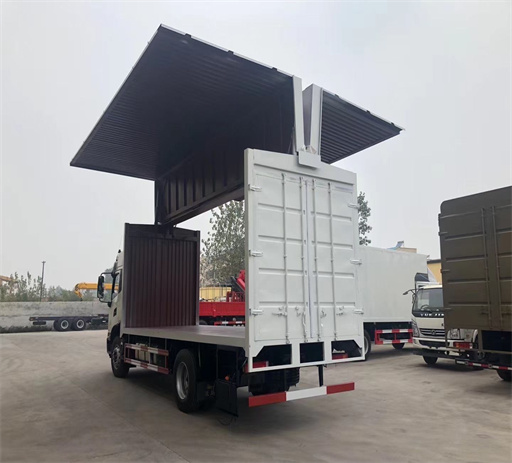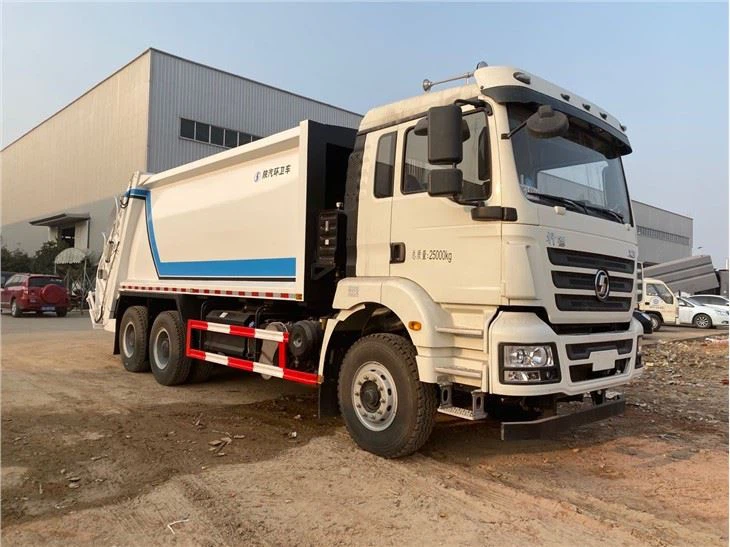Understanding the 30 yd Compactor: An Essential Guide

When it comes to waste management and construction projects, efficiency is paramount. One key piece of equipment in this domain is the 30 yd compactor. In this article, we will delve deep into everything you need to know about the 30-yard compactor, from its specifications and usage to practical tips and examples. Whether you’re managing a construction site, working at a landfill, or involved in urban waste management, understanding the 30 yd compactor and its benefits can help streamline operations and reduce costs.
What Is a 30 yd Compactor?
A 30 yd compactor is a large-scale waste management machine designed to compress waste materials into manageable units. Typically used in construction, recycling, and landfill operations, this heavy-duty equipment plays a significant role in reducing the volume of waste, making transportation easier and more efficient.
Specifications of a 30 yd Compactor
- Capacity: 30 cubic yards
- Weight: Approximately 15,000 – 20,000 lbs
- Dimensions: Varies by model, generally around 6-8 feet wide and 25-30 feet long
- Engine Power: Ranges from 100 to 300 horsepower
- Type: Can be stationary or mobile
Types of 30 yd Compactors
There are various types of 30 yd compactors, each suited for specific purposes:
1. Stationary Compactors

These are designed to remain in a fixed location. They are ideal for businesses that produce a consistent amount of waste.
2. Mobile Compactors

Mobile compactors come with wheels and can be easily transported. They are useful for construction sites where waste generation varies.
3. Vertical Compactors
This type uses a vertical compression mechanism and is more suitable for smaller spaces or specific types of waste.
Advantages of Using a 30 yd Compactor

Investing in a 30 yd compactor comes with a range of advantages:
Increased Efficiency
Compact waste takes up less space, meaning fewer trips to waste facilities.
Cost Reduction
By compressing waste, businesses can often reduce disposal costs, as many waste management companies charge based on volume.
Improved Safety
By managing waste properly, you reduce the risk of accidents on job sites caused by scattered debris and materials.
Environmental Benefits
Effective waste management supports recycling initiatives and reduces landfill contributions, promoting sustainability.
How to Operate a 30 yd Compactor Safely
Using a 30 yd compactor can be straightforward, but safety should always be a priority. Here are practical tips on safe operation:
1. Training
- Ensure operators receive comprehensive training on the machinery.
- Understand the compactor’s controls and safety features.
2. Personal Protective Equipment (PPE)
- Wear appropriate PPE, including safety glasses, gloves, and hard hats.
- Use hearing protection if the machine is particularly loud.
3. Regular Maintenance
- Check hydraulic fluid levels before operation.
- Inspect belts and hoses for wear and tear.
4. Safe Loading Practices
- Avoid overloading the compactor to ensure effective operation.
- Distribute the weight evenly to prevent tipping or uneven compaction.
Practical Examples of 30 yd Compactor Usage
Here are some real-world scenarios where a 30 yd compactor is invaluable:
1. Construction Sites
On large construction sites, a 30 yd compactor helps manage the increased waste generated during building. It allows workers to quickly and efficiently deal with debris, recyclables, and other waste materials.
2. Recycling Operations
For facilities that manage a diverse range of recyclable materials, the compactor can manage bulk materials like cardboard, paper, and plastics, reducing volume and improving efficiency.
3. Landfills
In landfills, compactors help maximize space, ensuring that waste is stacked and handled efficiently. This usage also prevents environmental issues associated with waste overflow.
Cost Considerations for a 30 yd Compactor
When considering a 30 yd compactor for your operations, it is important to factor in various costs.
1. Purchase vs. Rental
Deciding whether to buy or rent involves understanding how often you’ll use the compactor:
| Criteria | Purchase | Rental |
|---|---|---|
| Initial Cost | High | Lower |
| Maintenance | You handle | Included |
| Flexibility | Less flexible | More flexible |
| Long-term Investment | Good | Not applicable |
2. Maintenance Costs
Regular maintenance is paramount for the longevity of the compactor. This includes:
- Routine oil changes
- Filter replacements
- Periodic inspections by professionals
3. Operational Costs
Consider fuel consumption and the cost of trained operators when budgeting.
Choosing the Right 30 yd Compactor for Your Needs
Selecting the perfect compactor requires careful consideration. Here are factors to help guide your choice:
1. Type of Waste
Consider the types of materials you’ll be compacting. Some models are optimized for specific materials.
2. Frequency of Use
Evaluate how often you will need the compactor. Frequent use may justify a purchase.
3. Space Availability
Ensure your operational space can accommodate the compactor’s size.
FAQ about 30 yd Compactors
1. What is the difference between a 30 yd compactor and a smaller compactor?
The major difference lies in the capacity and application. A 30 yd compactor is designed for large-scale operations, while smaller compactors are suited for minimal waste generation.
2. Can I use a 30 yd compactor for hazardous materials?
Generally, no. 30 yd compactors are not designed for hazardous materials. Specialized equipment is required for such waste.
3. How often should I maintain my 30 yd compactor?
Regular maintenance should be performed every 200-250 hours of operation, or as recommended in the manufacturer’s guidelines.
4. What types of materials can a 30 yd compactor handle?
A 30 yd compactor can handle a variety of materials, including construction debris, cardboard, and mixed waste. However, it is important to follow manufacturer guidelines for specific types.
5. Is it better to rent or buy a 30 yd compactor?
This decision depends on the frequency of use. For occasional use, renting may be more cost-effective, while frequent users may benefit from purchasing.
6. How much does a 30 yd compactor cost?
The cost of a 30 yd compactor can range widely, from $20,000 to $50,000, depending on the brand, model, and features included.
